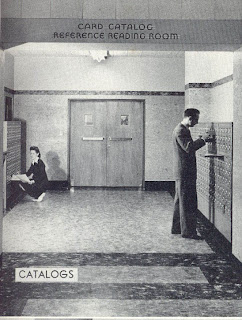At the end of last year, sometime right around the beginning of the holiday shopping season, it seemed editors and writers in just about every popular-news-and-editorial-based magazine and website were complaining that publishing was coming to an end as we know it … or, at least, there’d be an end to print. That turned out not to be the case, and probably never will be. The end was not so nigh as some may have had us believe. But that’s not to say that there is no massive sea change in the ways people are now buying and reading books, in the ways publishers are disseminating and promoting books, and the ways libraries are lending books. There are, and all these new processes of buying, selling, lending e-books and the copyright rules and rules of ownership that are paired with e-books─not to mention the decisions inherent in choosing from the different file types, the device requirements, and the terms of use from the publisher, the retailer, etc., etc …. This can all get really confusing and really murky─really quick.
At Langsdale, though, we are trying to make your choices, digital or print, as easy as possible. For all students, staff and faculty, it was and will continue to be easy to get books not only physically from our shelves, but also to have books delivered to Langsdale from any public university in the state within a few days (just a few clicks on the website or a quick chat with our circulation staff).
E-books though were a bit trickier. For some time now, Langsdale has had thousands of e-books available for patrons to “check-out,” but that paled in comparison to the number of physical books held in our collection. Over the past year or so, we have been steadily bolstering our collection of digital media of all kinds, including books, but that process takes a while and we simply cannot get everything right away. Another slight snafu in the e-book acquisition tangle came from the fact that what we didn’t have available as an e-book we simply could not get, i.e. acquisitions from other libraries. Those lending privileges were not allowed. But now, thankfully, this is all coming to an end. During the fall 2013 semester, Langsdale and the University System of Maryland will roll out a massive collection of e-books that will be available across institutions for “check out.” The collection will be available on Langsdale’s online book search, listed in the same fashion as that of any other book in the collection.
Every year, the publishing industry does a survey, which, before e-books, went only as far as publishers’ board rooms. No one really cared how people bought and used books unless they were in the industry. Now, in 2013, it’s national news. In the past year, e-books made up about 20% of all books purchased (as reported by The New York Times) and that number appears to be rising each year. Libraries all around the world are scrambling to figure out how to accommodate this growing interest, and it seems that our librarians at Langsdale, along with those across the USM, have come up with a system that allows a great many titles to be easily available to all Maryland students, no matter the campus. Look out for new eBook titles being loaded all the time on Langsdale’s server.
